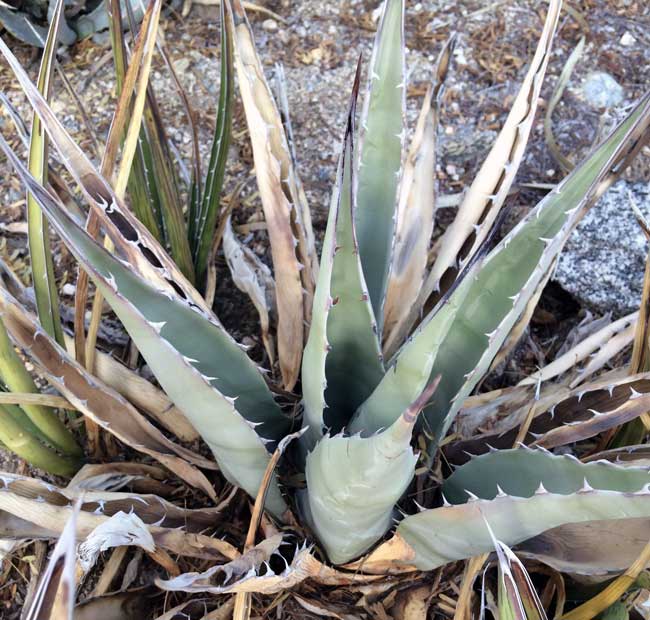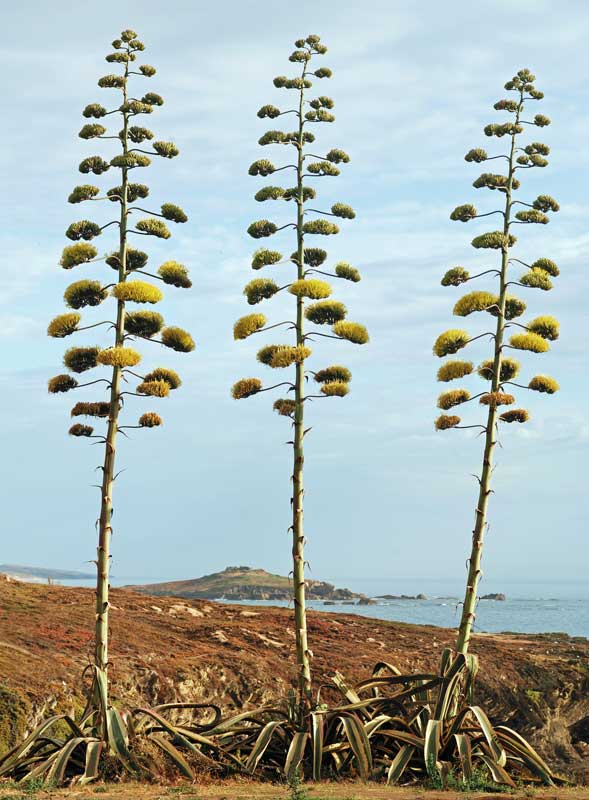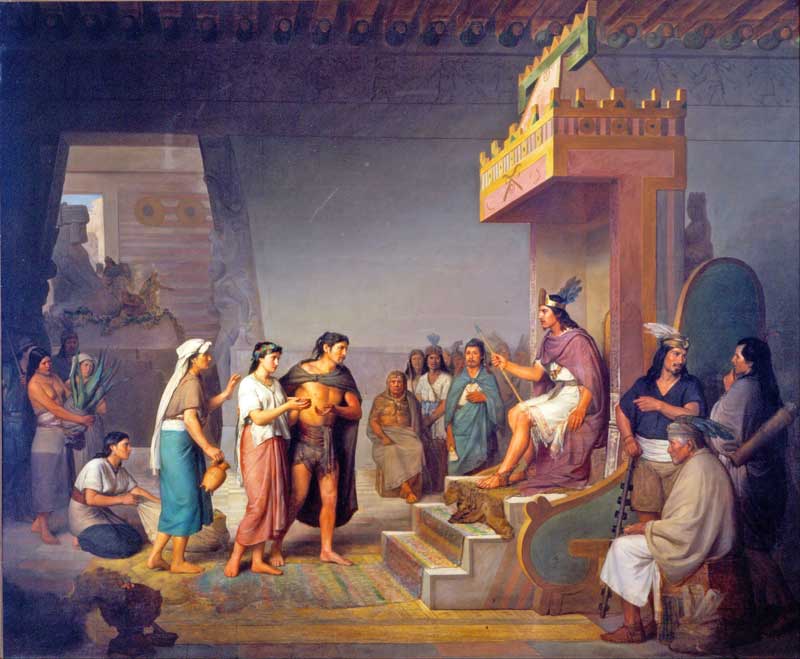Ethnobotany of southern California native plants:
Centuryplant (Agave americana)

Centuryplant growing in the winter near Palm Springs.

By Alvesgaspar CC BY-SA 3.0, via Wikimedia Commons
Three centuryplants displaying their flower stalks.
Century plant (Agave americana)
Agave americana, also referred to as the centuryplant or maugey, is a large and majestic flowering plant from the Agave family. This species is originally native to the southwestern US and Mexico.
The agave grows up to 6 feet tall and sports grayish blue/green spiny leafs with sharp tips. Centuryplant received its name because it takes its time before sending up a stalk of flowers. A century, however, is an exaggeration. The plant lives for 20-30 years and shoots up a dramatic flower stalk as its final act. This flower spike can reach 30 feet into the sky. Nectar from these flowers attracts different types of birds and insects.
In the mid 1700’s, as Spaniards continued moving into present day Mexico and the US, they observed the lifestyle of Southern California natives. Miguel del Barco, a Jesuit priest at the Mission San Javier, wrote a detailed account regarding the manner natives ate this plant.
Hardwood tools were employed to cut up the plant, favoring the upper part as it was the most tender. The natives removed the leaves and roasted the heart of the plant in a stone-lined subterranean pit.
Cahuilla natives removed the terminal spine from the leaf tip of Agave americana and converted the sharp tip into a needle. This needle could be used to thread fibers.
The tough centuryplant leaves yielded fibers suitable for rope, matting and embroidery material for leather goods.
In Pre-Columbian Mexico, natives cut the flower stem prior to blossoming and collected a sugary liquid called aguamiel (honey water). This sweet water, as well as the sap from the leaves, was fermented to produce pulque. Pulque is the predecessor of tequila.

José María Obregón [Public domain], via Wikimedia Commons
The discovery of pulque by nineteenth-century Mexican painter José Obregón.
Indians in the central highlands of Mexico began drinking pulque around 200 A.D. This painting celebrates that moment when the merits of this fermented drink became apparent.
References:
Castetter, Edward F. 1935 Ethnobiological Studies in the American Southwest I. Uncultivated Native Plants Used as Sources of Food. University of New Mexico Bulletin 4(1):1-44 (p. 10)
Please return to our main Ethnobotany of southern California page.
On our main ethnobotany page, we present a clickable list of the southern California native plants that became a part of the culture of Native Americans and early European settlers. These plants were used for medicine, food, shelter, drink, tools and art.
Warning: The information about plants on this website is intended for general educational purposes only. The author of this website accepts no responsibility for problems arising from the user’s misidentification, misuse, or use of plants. Please read the full TERMS associated with this website.
